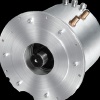Индустриален клъстер "Електромобили" - Учредители:








 |

|

|
| Актуално | За клъстера | Екип | Членове | Документи | Анализи | Услуги | Стани член | Награди | ССЕМ | Контакти |
ИКЕМ - Индустриален клъстер "Електромобили" | Събота, 13.12.2025 | |
|
Electric Vehicle Charging Systems in the Helsinki Region
1.1 General Constantly rising fuel prices and environmental consciousness have forced communities to consider alternative transport solutions. In the past, electric cars have not been a noteworthy alternative for cars with an internal combustion engine due to poor batteries. Lately, batteries and electric cars have developed to become a respectable alternative to gasoline powered cars. Although battery prices are high and driving ranges are low compared to the gasoline cars, electric vehicles entail several direct and indirect benefits to the society. Numerous projects concerning electric transportation around the world are in operation. Since most of these projects are at the initial phase, actual results are not available yet. The electric vehicle technology and business are, however, developing rapidly. Thus, it is vital to keep up with the pace and develop innovations and concepts further. After all, the Finnish industry has advantageous business opportunities after the transition really commences. 1.2 Scope and aim of the thesis This Master’s Thesis is a part of the SIMBe (Smart Infrastructures for Electric Mobility in Built Environments) project, started up in January 2010. The project is introduced further in Section 1.4. Chapter 2 presents the history, technology and features of electric cars. Additionally, battery technology is under study. The present state of the electric vehicle industry is assessed in Chapter 3. The primary aim of the thesis involves two points; to outline the possible charging solutions, and the feasible billing and metering methods for the electric cars in the Helsinki region. The fist aim is covered in Chapter 4 and the latter in Chapter 6. These solutions can be utilized at the implementing phase of the SIMBe project. The scope of the billing and metering evaluation was to consider this issue from the end-users viewpoint. Helen Sähköverkko Oy provided the research data used in Chapter 5 that handles the secondary target – to examine the effects of electric vehicle charging on the medium voltage network. In addition, the increase of an individual household’s electricity consumption was assessed. At the end of the thesis, pro- posals for the basic solutions of charging are introduced. Also, convenient billing and metering methods from the user’s viewpoint are suggested. 1.3 Methods The thesis was started by familiarizing with the subject and gathering basic understanding about the state of the industry worldwide. After the introductory phase, a preliminary table of contents was prepared. Based on the table of contents, more accurate data about the chapter at issue was explored. The initial phase mainly included literature survey. Later, concepts from the world and ideas from the SIMBe project were partially modified and utilized into basic charging solutions. The billing and metering solutions were evaluated by assessing the current means of payment and ways of metering the electricity consumption. The effects of electric vehicle charging to the power grid based on the data received from Helen Sähköverkko Oy. By including own impressions about the charging load into the received data, a conception about the effects to the medium voltage network was acquired. 1.4 The SIMBe project The overall aim of SIMBe is to accelerate sustainable electric mobility in Finland. SIMBe aims to prepare Finnish industrial parties and consumers for transition towards electric transportation. The project covers the state and opportunities of the industry in its entirety. The project focuses on built up environments and Helsinki will be the initial pilot city. Electric vehicles (EV) and plug-in hybrid electric vehicles (PHEV) lie within its scope, but not hybrids without plug-in capability. The scheduled time for the whole project is from January 2010 to December 2011 and the total budget is 1 M€.
SIMBe starts with a stakeholder value analysis including industry, public authorities and end users. In the modeling and simulation phase, market-, traffic- and technology assessments as well as new and existing services will be integrated into concepts for strategic business models and earning logics. Further outputs include an infrastructure blueprint and guidelines for transition, uncertainty management and market entry.
|
Продукти 
Комплектна система за задвижване на електромобилиСистемата за електрозадвижване обхваща гама с три основни типоразмера на ел. мощност със съответните компоненти - електромотор и контролер. oще ...Виж всички продуктиАнкета с продължение...
|
|
|
 ЕВРОПЕЙСКИ СЪЮЗ Европейски фонд за регионално развитие Инвестираме във вашето бъдеще |
 |
 ОПЕРАТИВНА ПРОГРАМА „Развитие на конкурентоспособността на българската икономика” 2007-2013 www.opcompetitiveness.bg |
|
Интернет страницата е създадена с финансовата подкрепа на ЕФРР, в рамките на проект „Развитие на Индустриален Клъстер Електромобили” по ДБФП К-02-2/28.09.2011 г. |
|||